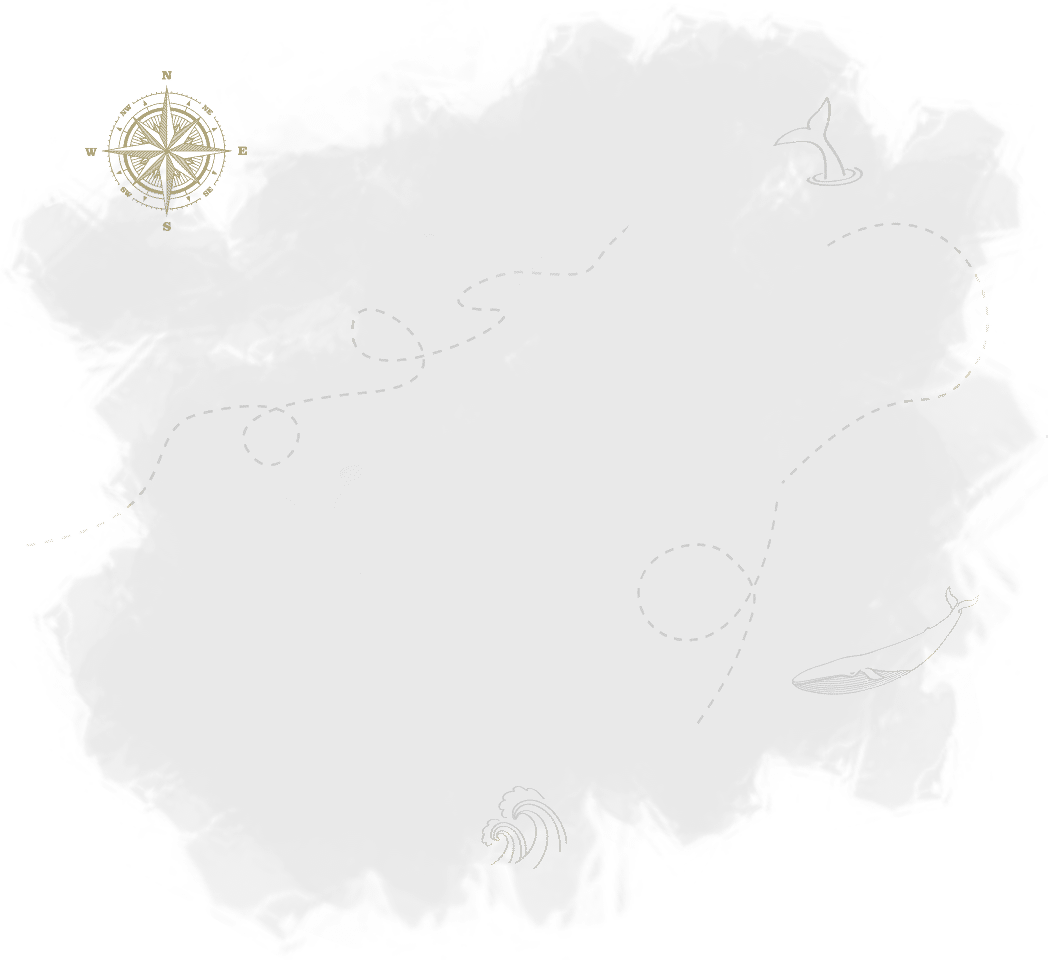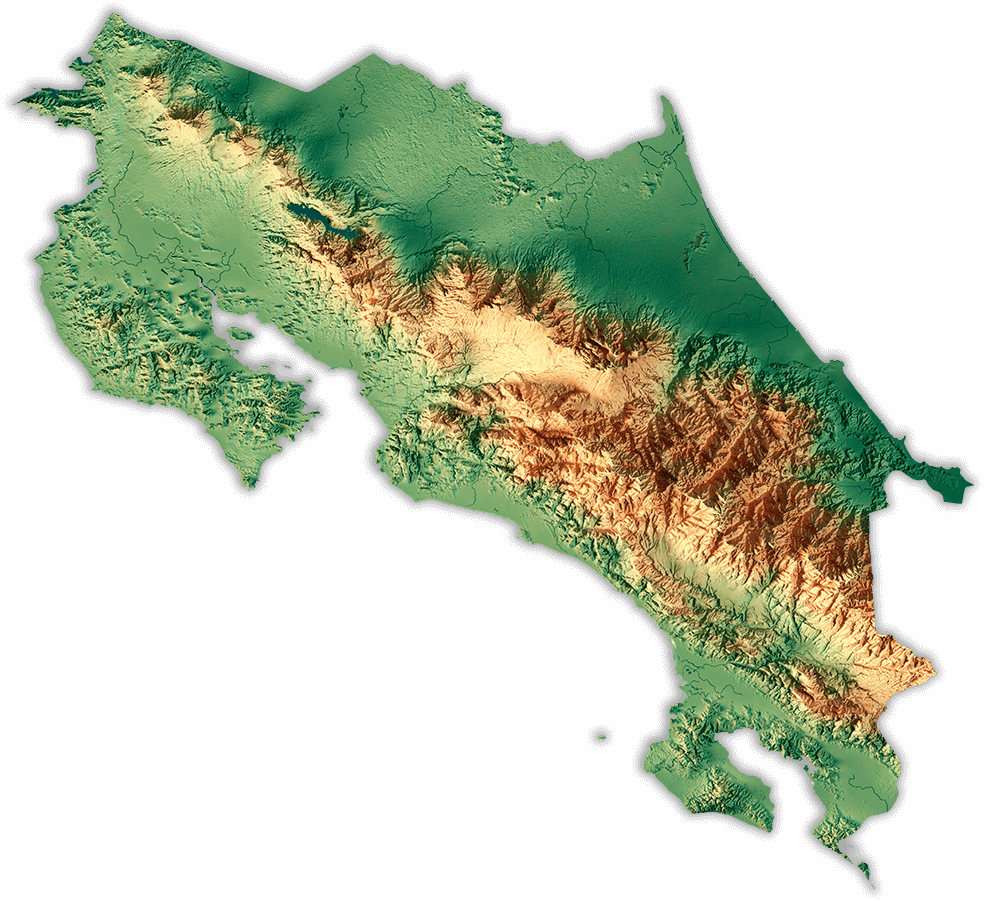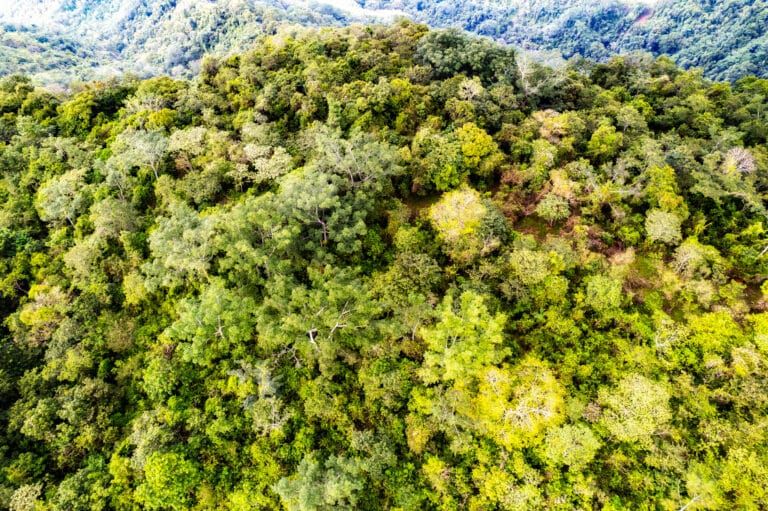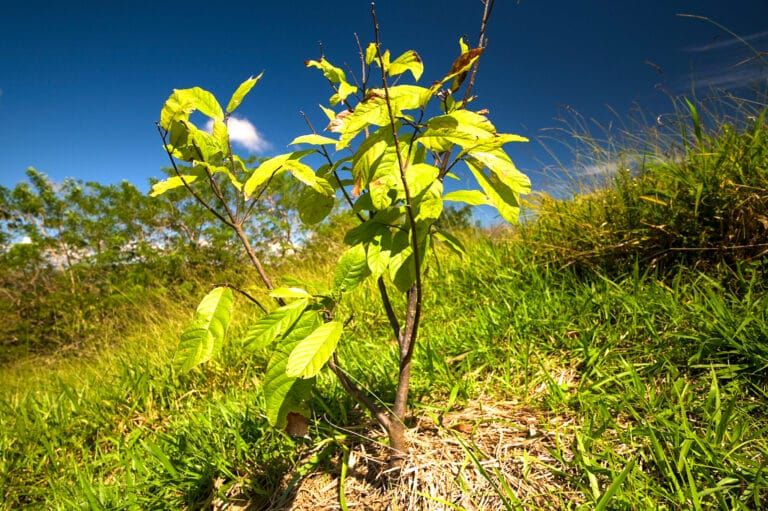save nature - create resources
- THE TICORICO KNOWLEDGEBASE -
Reforestation
the wildlife of
Costa Rica
In our reforestation work we geographically refer to the region of the Nicoya Peninsula in the Guanacaste Province, which belongs to the vegetation zone of the so-called ‘rain green forests’. It is characterized by a dry season of several months from December to May, The rainfall on the North Pacific oscillates between 1500mm and 3,000mm annually.
Due to the lower rainfall in this part of the country, most of the trees lose their foliage during the dry season, while shrubs and other woody plants do not. In place of the shed foliage, however, the specific fruits, which are important for an intact fauna, and also an immense sea of flowers then appear to the astonished observer, although this experience has also been greatly diminished in the last three decades by deforestation of those species. The very hard wood of Tabebuia with fascinating violet and also yellow flowers or the pink Cassia shaped the landscape in many places during the dry season.
The aim is to restore this feast for the eyes to its original beauty.


Total
Reforestation
Water
San José is the capital and largest city of Costa Rica, and the capital of the province of the same name. It is in the center of the country, in the mid-west of the Central Valley, within San José Canton.
Elevation: 1,172 m
Population: 339,581 (2017)
An amazing part of the world
OUR PROJECTS
TICORICO
SAVE NATURE
Today, nothing has changed, although by now every child knows that forests are essential for survival and can do more than create space for pasture or serve our consumption in the form of paper or furniture. Shockingly, since the dawn of civilization, humans have destroyed nearly 50 percent of the world's tree cover...
Read moreTICORICO
CREATE RESSOURCES
"Create Ressources" is our vision to give back to nature - something that we consume in everyday life without replacement. It is no secret that the global destruction of rainforest is damaging the cycle of nature. Our goal is to accelerate the renaturation through our project and to re-create a primary forest-like structure. Based on our "Save Nature" project, it includes the planting of native tree species, some of which are threatened with extinction or even no longer exist regionally. We and you are recreating nature. But it is important to understand how this reforestation has to take place. In order to reach our goal as quickly as possible and naturally, we work with local and experienced partners who have the necessary know-how. You can find out how reforestation works in our knowledge library. The general planting time in Costa Rica is the end of the dry season, this varies a bit but usually it is end of April/beginning of May every year. This is when the natural conditions are best for seeding. In advance, the trees/plants are grown as seedlings in suitable greenhouses and later released at the beginning of the planting season. Of course, each tree needs its own space to develop and flourish to its full glory, so it is necessary to provide the optimal area for successful growth. Therefore, please do not be surprised that if you want to support us, it will happen that depending on the selection of the desired tree, the corresponding footprint will be automatically adjusted.
Read moreTICORICO
SOCIAL
"TicoRico" does not serve any commercial purpose, but is a non-profit environmental protection project with the aim of reviving nature to its fullest extent and strengthening the region and its people. The areas are to remain a permanently untouched area, where life and nature organize themselves on their own...
Read morethe wildlife of
Costa Rica
Reforestation usually takes place on the cattle pastures covered with so-called ‘charral’, or often even completely devoid of trees and shrubs and planted with imported grasses from South America and Africa, which were created in the 60s and 70s of the last century due to the then financially interesting meat production for none other than the best-known US fast food chain.
This deforestation, even with government incentives, led to the fact, especially on the Nicoya Peninsula, that there are very few patches of primary forest left today. In addition, many species of commercial timber that flourish in the dry season have also been removed for personal gain.
Without human intervention, the re-emergence of the original forests occurs in botanically well-defined stages, initially with the appearance of certain pioneer species over a period of many decades, normally between 60 and 100 years, but we can reduce this lengthy process by expert human intervention.
the wildlife of
Costa Rica
Some of these species in the successional “natural reforestation” are mainly the pioneer trees typical of our North Pacific region, such as Cecropia peltata (the guarumo or ant tree), Ochroma pyramidale (the balsa tree), or Schizolobium parahybum (gallinazo) among several other species. Wherever these species occur, it is called a disturbed environment.
Since many of these pioneer species act as nitrate binders, the endangered commercial trees are first planted in such areas, and then later the fast-growing pioneer trees are completely removed because of the shade they provide.
In the case of cattle pastures planted with so-called invasive grasses from Brazil such as Brizanta or the African Jaragua, the grasses with their very deep-lying root network are first removed and, after the new trees have been planted, constantly kept free of wild growth until the seedlings can be left to their own devices. This usually takes about 5 years when the trees have reached a certain height.
Of course, only endemic species are planted, which belong to the specific vegetation zones.
The planting sites are then protected with locally produced mulch and also natural fertilizer, which is also locally prepared.
the wildlife of
Costa Rica
When working pure cattle pastures for reforestation with native woods, we also do not use chemical products, but rely only on labor-intensive mechanical removal of the turf.
The first few years after new trees are planted mean work and dedication on the part of those involved, because in addition to the often-recurring grasses – they are extremely invasive – lianas and other climbers also find their way to the young trees, which could overload the still-tender trunks if care is not taken.
Many secondary and tertiary forests harbor such creepers, severely hindering tree growth due to the increasing weight of these “freeloaders.”
Since also in Guanacaste there is still a natural relationship between prey animals such as deer and wild boar etc. and their prey catchers such as jaguar, puma etc., contrary to all expectations, there are only marginal problems with browsing of the seedlings in this regard.
Once the native trees have enjoyed and survived the first years of human care, nature takes over again.
This way, until nature takes over, is our goal with TicoRico and we invite you to support us.





